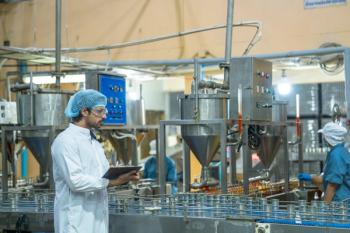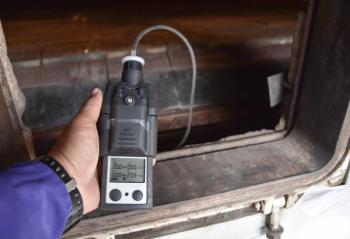
Top 10 Spectroscopy Articles of the Month: Highlights in LIBS, IR Spectral Interpretation, AI Applications, and More
The most viewed Spectroscopy DOI-registered articles from January 2025.
The following articles are the 10 most accessed digital object identifier (DOI) manuscripts from Spectroscopy for January 2025. Each article has been selected based on the number of successful views by readers, showcasing key developments and insights in spectroscopy and chromatography. Spectroscopy covers the main topics of electronic spectroscopy, vibrational spectroscopy, magnetic resonance, imaging techniques, atomic spectroscopy, and data analysis and integration.
This month we highlight articles from the ever-popular Spectroscopy columns IR Spectral Interpretation Workshop, Chemometrics in Spectroscopy, Molecular Spectroscopy Workbench, and Feature online articles on LIBS,and infrared and Raman spectra of amino acids. We hope you enjoy reading these most accessed DOI-registered technical articles from January.
This study explores the classification of flower species using laser-induced breakdown spectroscopy (LIBS) combined with principal component analysis (PCA) to enhance their appreciation, value, and application. Three flower species with similar colors or shapes were selected for analysis. Laser pulses were directed at the flower surfaces to generate plasma, and the emitted light was collected and analyzed to determine the elemental composition. A total of 240 experimental spectra were obtained using LIBS. The spectral data were preprocessed, and 28 characteristic spectral intensity ratios corresponding to six key elements (Na, Mg, Al, K, Si, Ca) were extracted. After normalization, these spectral features formed a 240×28 data matrix. To optimize classification, dimensionality reduction was applied using PCA, compressing the data from 28 variables to 3 principal components. A cluster analysis was then performed, leading to the establishment of a standard flower sample database. Finally, a template matching model (TMM) was trained for classification, achieving an overall accuracy of 97% (1).
This IR Spectral Interpretation Workshop article discusses the infrared (IR) spectra of polymers, and finishes the discussion of the spectrum of polyethylene (PE) started in a previous column. The article explores how different PE syntheses produce materials with different physical and spectroscopic properties, which introduces the concept of crystalline splitting and the rest of the story on CH2 rocking peaks (2).
This article examines the spectra of polymers as important materials and represents an excellent infrared (IR) spectral interpretation review. In this column, the author looks at the spectra of hydrocarbon polymers, including polypropylene and polystyrene, and looks at the IR spectra of these materials in detail, to see how IR spectroscopy can be used to distinguish them from each other (3).
In Part I (February 2023) of this two-part series on artificial intelligence (AI), and its subfield machine learning (ML), the authors presented the variety of chemometric algorithms used to compare AI, ML, and chemometrics. These algorithms included those used for classification, regression, clustering, ensemble learning, signal processing, and component analysis. This Part II article discusses the applications of AI to electronic and vibrational spectroscopy and touches on some applications of deep learning (DL), which is a subfield of machine learning where more complex artificial neural networks (ANNs) with more hidden layers are used. This column article includes several selected references that describe the application of AI in analytical chemistry and molecular spectroscopy. The authors give examples of AI and ML as applied to different vibrational spectroscopy methods, such as Raman, infrared (FT-IR), near-infrared (NIR), and ultraviolet-visible (UV-vis) spectroscopic techniques. This article is a sampling of the numerous research manuscripts addressing this subject (4).
AI, and its subfield ML, are major buzzwords in today’s technology world. In Part I of a two-part series, the authors take a look under the hood and behind the scenes to see what AI is and its applicability to analytical chemistry and spectroscopy for future discussion and elaboration. What are the benefits and limitations, as well as the praises and detractions, of AI? How does AI relate to chemometrics (5)?
This online research article describes the infrared and Raman spectra of six new hexafluorosilicate salts (b-AlaH)(BetH)SiF6·H2O (I), (β-AlaH)(l-ProH)SiF6 (II), (β-AlaH)(l-ProH···l-Pro)SiF6 (III), (BetH)(BetH···Sar)SiF6·H2O (IV), (GlyH···DMG)2SiF6 (V), and (DMGH···Sar)2SiF6 (VI), containing different amino acids (glycine (Gly), sarcosine (Sar), dimethylglycine (DMG), betaine (Bet), β-alanine (β-Ala) and l-proline (l-Pro)) are typically recorded and discussed based on their structures. The presence of cations, dimeric cations with short hydrogen bonds, and hexafluorosilicate anions are demonstrated in the spectra shown (6).
The author surveys the spectra of carbonyl-containing polymers by looking at the spectrum of cellulose acetate. What makes cellulose acetate unique is that it is a carbohydrate molecule that is reacted to obtain pendant ester groups. The article introduces the subject of polycarbonates. Carbonates are a carbonyl-containing functional group that contains three oxygen atoms. An example of an economically important polycarbonate is Lexan, which is made into windows and car parts. In this column, the author examines its spectrum in detail (7).
In this article, the author reviews the band assignments of a protein spectrum, pointing out why it can be useful to know the band assignments when attempting to use the Raman spectra to understand the functionality of proteins. The American Chemical Society (ACS) has just issued a virtual issue of the Journal of Physical Chemistry entitled “Protein Crowding and Stability,” discussing how the protein conformation impacts its biological functionality. The author addresses how the Raman spectra can help with the determination of protein structure (8).
In this IR Spectral Interpretation Workshop column, the author continues to study C=O-containing polymers by first reviewing the spectroscopy of the ester functional group and then analyzing the spectra of several important polyesters. Among the spectra studied is polyethylene terephthalate (PET), one of the most economically important polymers in the world (9).
This column article surveys the spectra of nitrogen-containing polymers with a look at polyurethanes. Polyurethanes are widely made into foam rubber, elastic, and wood coatings, amongst other things. The spectra of polyurethanes are similar to polyamides since both polymer types contain C=O and N-H bonds. Therefore, the author begins with a review of the spectra of polyamides (10).
References
(1) Dai, B.; Liang, F. Flower Classification Using LIBS Combined with PCA Chemometrics. Spectroscopy Online, January 8, 2025. DOI:
(2) Smith, B. C. The Infrared Spectra of Polymers II: Polyethylene. Spectroscopy 2021, 36 (9), 24–29. DOI:
(3) Smith, B. C. The Infrared Spectra of Polymers III: Hydrocarbon Polymers. Spectroscopy 2021, 36 (11), 22–25. DOI:
(4) Workman, J., Jr.; Mark, H. Artificial Intelligence in Analytical Spectroscopy, Part II: Examples in Spectroscopy. Spectroscopy 2023, 38 (6), 10–15. DOI:
(5) Workman, J., Jr.; Mark, H. Artificial Intelligence in Analytical Spectroscopy, Part I: Basic Concepts and Discussion. Spectroscopy 2023, 38 (2), 13–22. DOI:
(6) Tonoyan, G. S. Vibrational Spectroscopic Analysis of Six New Hexafluorosilicate Salts Containing Different Amino Acids. Spectroscopy Online, January 15, 2025. DOI:
(7) Smith, B. C. Infrared Spectroscopy of Polymers, IX: Pendant Ester Polymers and Polycarbonates. Spectroscopy 2022, 37 (11), 16–19, 31. DOI:
(8) Adar, F. Interpretation of Raman Spectrum of Proteins. Spectroscopy 2022, 37 (2), 9–13, 25. DOI:
(9) Smith, B. C. Infrared Spectroscopy of Polymers, VIII: Polyesters and the Rule of Three. Spectroscopy 2022, 37 (10), 25–28. DOI:
(10) Smith, B. C. Infrared Spectroscopy of Polymers XIII: Polyurethanes. Spectroscopy 2023, 38 (7), 14–16. DOI:
Newsletter
Get essential updates on the latest spectroscopy technologies, regulatory standards, and best practices—subscribe today to Spectroscopy.





